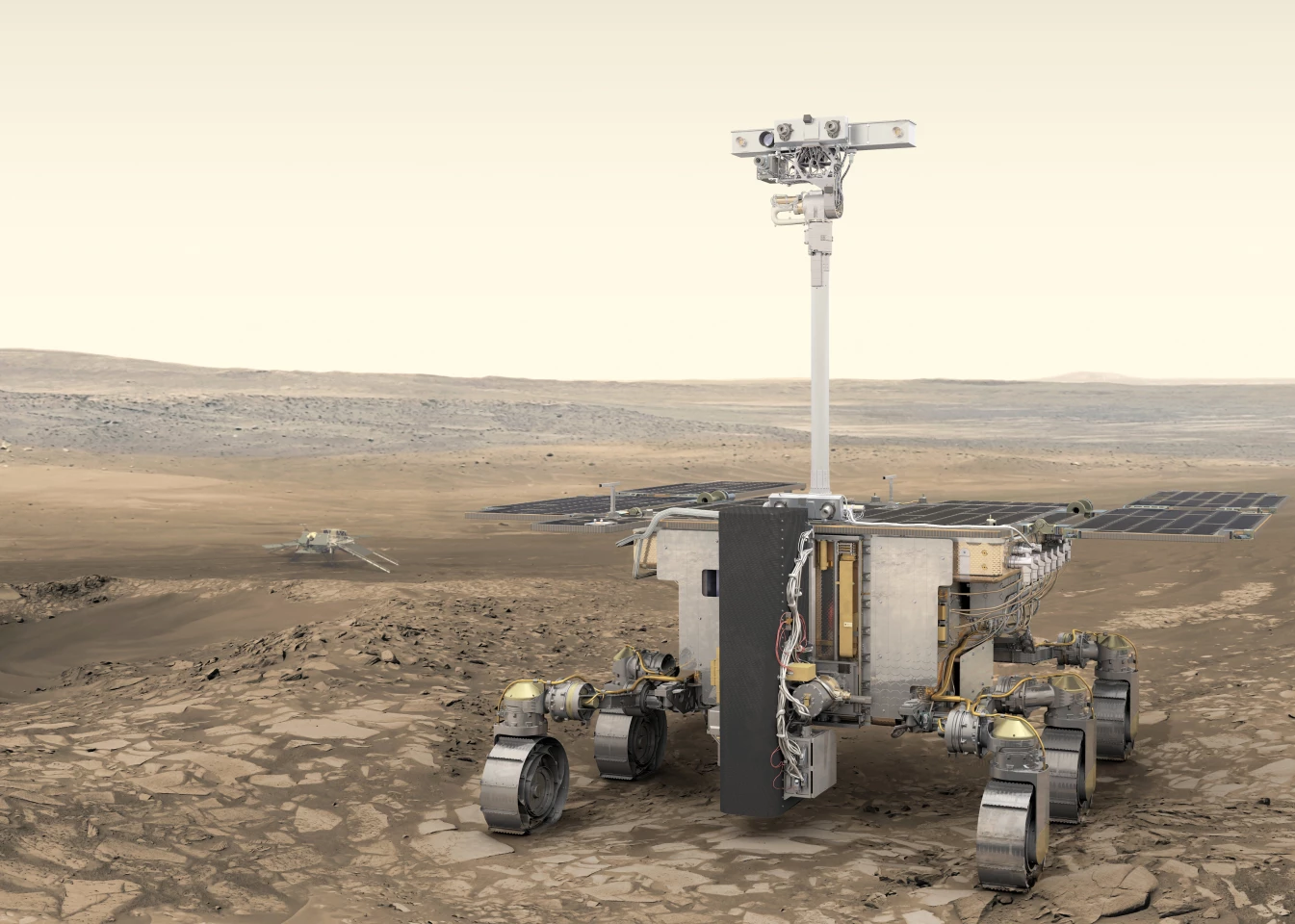ESA's Rosalind Franklin Mars rover has received its full suite of scientific instruments that it will use to seek out signs of past or present life on the Red Planet. At the Airbus Defence and Space facility in Stevenage, Hertfordshire, England, the unmanned explorer was equipped with an array of sensors, including the most sophisticated camera to be sent to the Martian surface.
Named after British scientist Rosalind Franklin, whose work in crystallography helped to map the structure of the DNA molecule, the rover is a key part of the ExoMars 2020 mission scheduled to launch between July 26 and August 13, 2020. This will be the second phase of the joint ESA/Roscosmos mission to the Red Planet – the first being the Trace Gas Orbiter (TGO) launched in 2016 that is currently in Martian orbit.
The Franklin's primary mission is to seek out geological evidence of life on Mars sometime in the planet's distant past when it was much wetter and had a denser atmosphere, or signs of present-day microbial life that may still exist in buried areas. To achieve this, the Kazachok landing platform will deposit the Franklin on an ancient seabed near the equator in the Oxia Planum region.

Once on station, the rover will seek out preserved areas of the ancient stratigraphy that have only recently (in geological time) been uncovered. It will then bring to bear its instruments, headed by the PanCam. Sitting atop a 2-m (6.6-ft) mast, this state-of-the-art imager boasts stereo and high-resolution cameras to create 3D maps for navigation as well as exploration, and to gather data in the visible and near-infrared wavelengths of the spectrum.
According to ESA, PanCam will work in conjunction with its infrared, neutron, and multiwavelength spectrometers, and a drill capable of boring as deep as 2 m (6.6 ft) beneath the Martian surface. These drill samples will then be returned to the rover for onboard analysis with an emphasis on seeking biosignatures, like amino acids.
In addition, a Dutch-built camera on the drill will take close-up images of the soil while monitoring drilling operations or, when the drill is stowed, providing additional views from the front of the rover. Rounding out the suite is a subsurface radar to search for signs of water or ice beneath the soil.

The space agency says that the rover is nearing completion and is scheduled to be shipped to Toulouse, France, where it will undergo environmental testing before being sent on to Cannes for mating with the Kazachok lander, and integration with the descent module and carrier module. Then it goes in to be stacked atop a Russian Proton-M rocket in anticipation of launch and its arrival on Mars in March 2021.
"Our rover has really taken shape," says Jorge Vago, ESA's ExoMars rover project scientist. "We have an incredibly powerful scientific payload to explore the surface and subsurface of Mars on our quest to find biosignatures."
The video below shows how ESA is testing the Rosalind Franklin.
Sources: ESA, UK Space Agency








